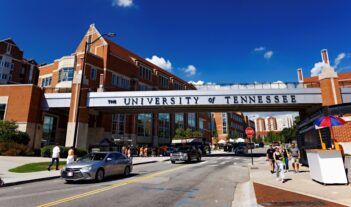
A recent New York City initiative attempts to remove barriers to higher education.
A new New York City program makes sure that the hardest part about taking the SAT is not paying the test fee. Earlier this spring, New York City Schools Chancellor Carmen Fariña joined public school students to celebrate College Awareness Day, promoting a “college-going culture” among all New York students. The celebration was, in part, an effort to mobilize students to participate in a new initiative called SAT School Day.
For the first time ever, all New York City high school juniors will be able to take the SAT, the standardized test for college admissions, for free on a regular school day. Previously, only students eligible for fee waivers were able to sit for the SAT at a free or reduced cost; however, the new program covers test fees for all students in the city’s public schools.
Chancellor Fariña announced the initiative in fall 2015, but the proposal was not ready for administration throughout all of New York’s public high schools until the spring semester of the 2016-2017 school year – a month before one of the most popular SAT dates for many high school students. The college access initiative is part of larger educational reforms in the city designed to “increase equity and excellence across all public schools.”
The program is funded by the New York City Department of Education (NYCDOE) and is part of a greater city-wide education plan, College Access for All . College Access for All was a central part of Mayor Bill Di Blasio’s and Chancellor Fariña’s education agenda, Equity and Excellence, which included a range of policies adopted to give every student from middle school to high school access to “college-ready culture.” Through College Access for All, public schools provide students with opportunities to develop a path to college, including opportunities to visit college campuses, support for completing college applications, mentorship programs, and college-oriented financial advisers.
Although funded by NYCDOE, SAT School Day is a program developed by The College Board, the non-profit organization responsible for administering the SAT and providing resources to students, parents, and schools for college preparation. The College Board calls the program a “unique opportunity for students to take the SAT during class hours, encouraging them to prepare for college enrollment and completion.”
Because the exam is administered on a regular school day and “in a familiar environment,” students are able to “take the exam without worrying about missing work, religious observations, or other extracurricular activities that often conflict with Saturday test days.” NYCDOE also reports that incorporating the SAT into a regular school day promotes a “college-going culture,” encourages students to consider college planning and college admissions assessments, and broadens accesses to higher education particularly for Hispanic and African American students.
The New York initiative attempts to remove the main barriers to a college education that many public school and low-income students face. However, in a recently published article, Jonathan D. Glater, a professor at the University of California, Irvine School of Law, argues that two critical moments have changed the landscape of the system regulating access to a higher education: financial aid and the use of standardized tests.
According to Glater, in the 50 years since Congress enacted the Higher Education Act, a “revolution” occurred in college access–demonstrated by a 17 percent increase in the number of high school graduates and a nearly 154 percent increase in the number of graduates. Although the Act was created to promote access to college, Glater argues that several challenges have set back high school graduates–particularly students from a lower socioeconomic class–from access to higher education.
Two present challenges to postsecondary and university education, Glater argues, are a “meritorious” reliance on the SAT and other standardized tests, as well as the growing dependence on debt and financial aid. Despite local efforts to broaden access to higher education through initiatives like SAT School Day, Glater acknowledges that any attempt to make college more accessible “would be confronted with the diversity of primary and secondary education.”
For example, standardized test scores–which often dictate non-need based grant aid–may often reflect the “quality of primary and secondary institutions attended,” as well as the “enrichment opportunities enjoyed by students whose families have greater resources,” Glater writes. He also notes that the prospect of taking on debt to fund a college education may deter students from applying to college.
Although initiatives like the College Access for All work to bridge this gap by providing access to free SAT preparation, free administrations of the SAT, and financial literacy training, Glater argues that postsecondary education reform efforts “must attend to the multidimensionality of barriers that students confront” and should “provide a guide to thinking about the effects on access of both race and class.”



